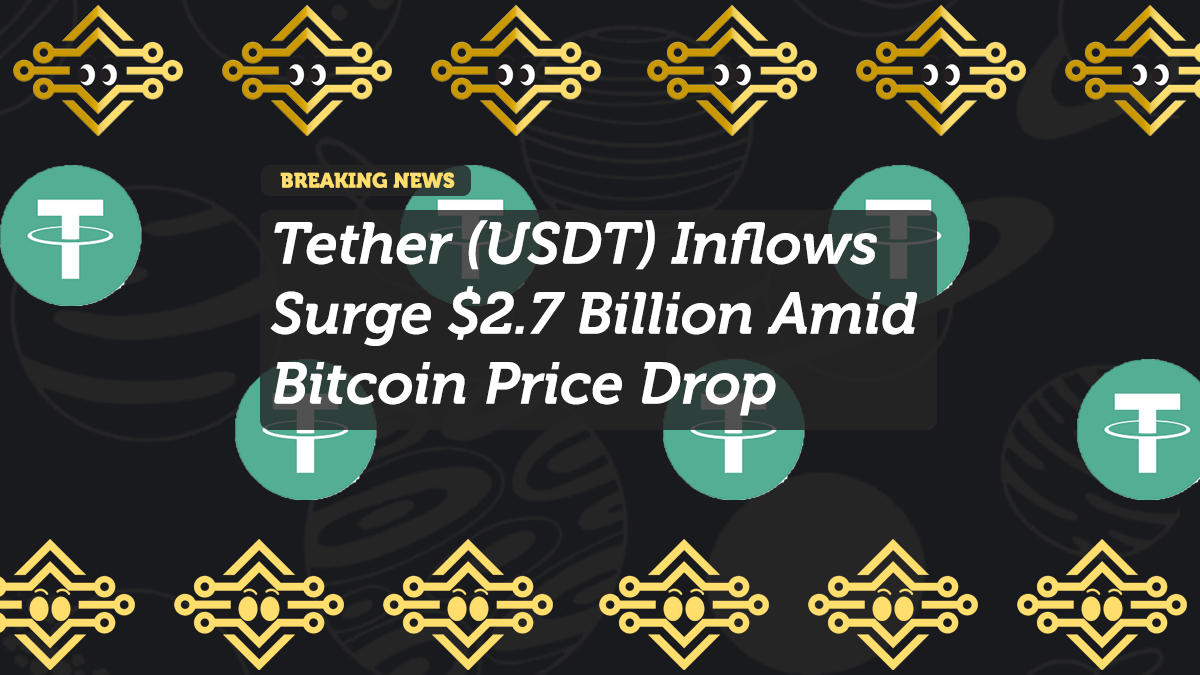
Tether (USDT) Inflows Surge $2.7 Billion Amid Bitcoin Price Drop
Amid Bitcoin’s recent price decline, a significant spike in Tether (USDT) inflows to centralized exchanges has caught the attention of traders and analysts. On February 10, 2025, as Bitcoin dropped to $91,000, Tether inflows surged by $2.7 billion, indicating that investors were preparing for potential market movements.
This event highlights the strategic role of stablecoins during periods of crypto volatility. Here’s a breakdown of what this surge means, its impact on the market, and the possible scenarios ahead.
Tether Inflows Surge: Key Numbers and Market Impact
1. Bitcoin Price Drop and USDT Inflow Data
- Bitcoin experienced a sharp decline, falling to $91,000 due to fears surrounding trade wars and macroeconomic uncertainty.
- USDT inflows totaled $2.72 billion, with a large portion transacted on the Ethereum blockchain.
- Major centralized exchanges, including Binance, Coinbase, and Kraken, saw a sharp increase in Tether deposits.
2. Why Are Traders Moving USDT to Exchanges?
Margin Calls and Risk Management
- Traders deposit USDT to provide collateral, avoiding forced liquidations on leveraged positions as Bitcoin’s price fluctuates.
- Large inflows suggest that many traders were trying to protect open positions during market instability.
Buy-the-Dip Strategy
- Some traders moved USDT to exchanges to take advantage of lower Bitcoin prices, anticipating a potential rebound.
- This is a common pattern during price dips, as investors accumulate assets at perceived discounts.
Increased Market Liquidity
- A large influx of Tether boosts exchange liquidity, enabling higher trading volumes and quicker order execution.
- High liquidity often reduces price volatility by allowing traders to enter and exit positions more efficiently.
Stablecoin Utility: How USDT Plays a Role in Crypto Market Stability
1. Hedge Against Volatility
- During market downturns, traders convert Bitcoin and altcoins into USDT to protect capital from further declines.
- USDT’s peg to the US dollar offers stability, making it a safe harbor during uncertain market conditions.
2. Regulatory Factors and Market Influence
- Despite regulatory scrutiny, Tether remains the dominant stablecoin in crypto markets.
- USDT’s availability on multiple blockchains makes it a preferred choice for traders worldwide.
3. Liquidity Provider for Crypto Trading
- Tether acts as a liquidity bridge between fiat currencies and cryptocurrencies.
- Large inflows indicate strong market engagement, even during volatile periods.
What’s Next? Potential Scenarios After the $2.7 Billion Inflows
1. Bitcoin Price Stabilization or Recovery
- After the initial drop, Bitcoin steadied between $95,000 and $100,000, suggesting that buying pressure returned.
- If USDT inflows lead to increased BTC purchases, a short-term price rebound is possible.
2. More Market Volatility and Further Corrections
- If macroeconomic concerns continue to pressure risk assets, Bitcoin could see further downward movements.
- Traders will likely use USDT to navigate ongoing market uncertainty, preserving liquidity for future trading opportunities.
3. Possible Shift to Other Stablecoins
- Regulatory changes in Europe have already affected Tether’s availability.
- If further restrictions arise, traders may turn to alternatives like USDC or DAI, impacting USDT’s dominance.
Final Thoughts: Tether’s Role in Market Strategy
The $2.7 billion USDT inflow surge highlights how traders use stablecoins as a strategic tool in times of volatility. Whether for margin protection, buy-the-dip opportunities, or market liquidity, USDT remains a critical component of crypto trading strategies.
Key Takeaways:
- Bitcoin fell to $91,000, triggering $2.7 billion in Tether inflows to exchanges.
- Traders likely deposited USDT to manage risk, avoid liquidations, or prepare for buying opportunities.
- Tether remains a crucial asset in crypto markets, acting as a hedge and liquidity provider.
- Bitcoin has since rebounded to $95,000-$100,000, but further volatility remains a possibility.
As the crypto market navigates macroeconomic uncertainties, stablecoins will continue playing a key role in market stability and trading strategies.
















